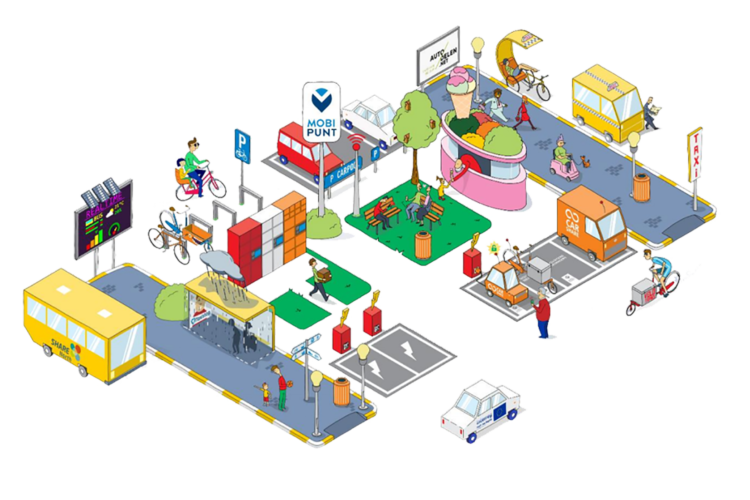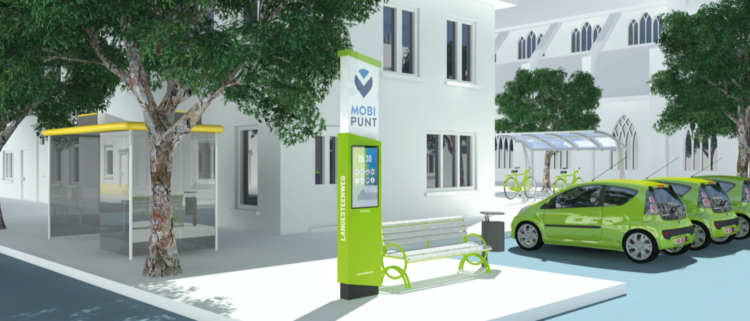Design of a mobility hub as part of living as a service concept
Mar 2020 - ongoing
Mobipunt integrates multiple modes of travel and provides customers with sustainable travel options. How could this be part of new Living as a Service concept?
This is a graduation project jointly led by Delft Design Lab’s Cities of Things Lab and Advier. The aim of this project is to design a service concept of a mobility hub as part of a smart living service. The idea of making a mobility hub a part of a living service is generated by Advier, which is the initiator of the roll-out of mobility hubs in the Netherlands. They are currently implementing and promoting mobility hubs in various construction projects. In addition, they organize Mobipunt Academies with Share North partners, where they share knowledge about setting up and managing mobility hubs. [1]
A mobility hub, namely a Mobipunt [2], is a place where mobility functions and other facilities that benefit the neighborhood meet. It offers various sustainable travel options to travelers, including public transport, self-driving cars, shared cars and bicycles. By integrating multiple traveling modes, mobility hubs benefit not only individuals but also the community and society.


At the same time, Living as a Service (LaaS) is developing. The concept of “ownership” has changed dramatically in recent years, especially when millennials choose affordable, practical products and services. The core idea of LaaS is that ownership is not all. Regardless of the product or service, shared ownership has become a viable option. [3] This means that users can subscribe to living services when renting a house. They pay for rent and service fees to enjoy various services around the house, such as house cleaning, gym, laundry, and of course mobility services. On the basis of LaaS, smart living as a service (SLaaS) is proposed. It enables users to enjoy personalized living services through IoT and artificial intelligence technology.
In this project, a mobility hub is going to be the center or a part of a smart living service. With the rise of sharing economy and people’s awareness of sustainability, the individual car use and ownership will decrease. People will choose more public transport and shared cars. Compared with the online shared car or bikes renting service examples, such as Car2go and Mobike, a mobility hub is a physical representation of these services. When it comes to a neighborhood, fewer cars will lead to more space for other facilities that benefit the residents, such as parks and squares. For the tenants and house owners living in the neighborhood, the mobility hub becomes part of the rental add-on services, enabling the service users to have access to multiple travel modes without having their own cars.
In addition to house owners and tenants, stakeholders in the mobility hub service include housing corporations, which will be responsible for integrating the mobility hub service into existing living services for their customers. Since the mobility hub is the public property of the neighborhood, the Owners’ Association will also participate in the management and maintenance of the mobility hub.
As people have increasing awareness of sustainability and shared mobility services are widely used in many cities around the world, there is a great opportunity for mobility hubs to be implemented on a neighborhood scale. This graduation project will study the needs of different types of users for shared mobility, and develop design guidelines for making a mobility hub a part of a smart living service.
[1] https://advier.nl/cases/mobipunten/
[2] https://www.mobipunt.net/
[3] https://www.thefctre.com/nl/living-as-a-service-laas/